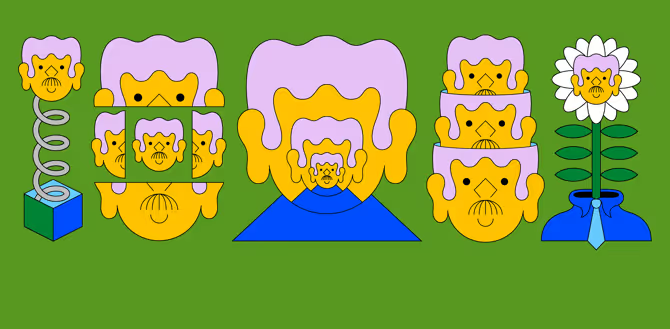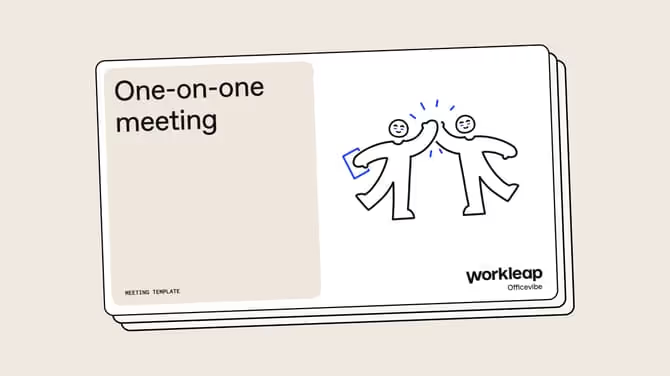12 Ways to increase remote employee engagement

Discover Workleap Officevibe's benchmark report on 12 key employee engagement metrics

Employee engagement is having its moment, and we're here for it. The data keeps flowing in and points to one thing: organizations cannot afford to neglect their employees' engagement levels. That's because happy, productive, and engaged employees work better, strengthen the company culture, and contribute even more to the bottom line.
According to Gallup's State of the Global Workplace 2022 Report, business units with engaged workers have 23% higher profits compared with their disengaged counterparts.
The stakes are higher with a remote workforce. The scattered nature of a distributed team makes it easier for engagement to dwindle if it isn't looked after. But it doesn't have to get to that point.
With these strategies and tips, you can keep remote employees engaged and build the foundations for a winning team.
What is remote employee engagement and why is it important?
Employee engagement is the emotional commitment that an employee has to their organization. It impacts the way employees work and is driven by 10 employee engagement metrics, including feedback, personal growth, wellness, and job satisfaction.
Having an engaged workforce is vital to an organization’s success, regardless of where and how your employees work. It’s the glue that holds teams and the broader organization together, through thick and thin. When engagement is high, employees contribute higher-quality work, collaborate well together, and act more positively at work.
When your team is distributed, it’s smart to pay even closer attention to engagement levels. That’s because the perks of good employee engagement – as well as the pitfalls of disengagement – are amplified when employees work remotely.
When engagement is on the rise, you’ll reap countless benefits:
- Easier and faster employee onboarding
- Higher chances of reaching (and even surpassing) business objectives
- Happier and more productive employees
- Increased employee retention rates
- Stronger employer brand and easier recruitment processes
However, if you let it slip through the cracks, employee disengagement can bring serious risks for remote teams:
- Feelings of isolation and poor team chemistry
- Long and costly onboarding
- Difficulty meeting objectives
- Misalignment and lack of collaboration between teams
- Poor peer-to-peer and employee-manager relationships
- Fragmented and weak company culture
Do you know where your team stands? Look out for these 9 signs of disengagement and close the gaps before anything escalates.
12 Ways to engage remote employees
Tackling engagement doesn’t have to be incredibly challenging. The trick is to take an approach that will address engagement in the short, medium, and long term. Therefore, a great employee engagement strategy will feature quick wins, long-haul initiatives, and everything in between. We put together a list of 12 ways to engage remote employees to help you get started.
1. Stay connected
At the height of the pandemic, Officevibe found that 1 in 5 employees felt huge discomfort being isolated. While the world has regained a sense of normalcy since then, many people still feel this way when working from home every day. Actively seeking and encouraging connection is the number one way to avoid any feelings of isolation.
2. Promote open and regular communication
One thing many of us took for granted before remote work became the norm was the ease and frequency of in-person communication. Think water cooler chats, lunchtime conversations, popping into someone’s office, or even peeking over your cubicle to ask someone a quick question. These interactions no longer exist for fully remote employees or seldom happen for hybrid teams. But that doesn’t mean communication has to take a hit.
Circumvent this by encouraging employees to reach out to you or their teammates whenever they have a question, need to bounce ideas, or simply want to chat.
3. Choose the right communication tools
To promote communication in the most constructive way, it’s important to use the right communication platforms and tools. This can be the difference between having a unique remote organizational culture, and one that falls flat. For example, using a platform like Slack internally gives employees a chance to create channels based on interests, projects, and teams, while allowing them to respond to conversations with more personality.
When it comes to collaboration, connectivity, training, and technology policies, 29% of employees ranked robust, standardized, and integrated as their top 5 qualities for virtual-collaboration tools.
Mckinsey & Company
Pro tip: If your team is hybrid, be sure to adopt a remote-first communication policy. This includes making all meetings virtually accessible and ensuring the experience is not impaired for remote attendees.
4. Meet with employees regularly
According to Officevibe data, 70% of employees say they’d like to spend more time with their managers. By meeting with employees individually through regular one-on-ones, you can easily satisfy this common employee need. To make your one-on-ones more impactful, set some talking points beforehand, opt for video calls whenever possible, and kick them off with a personal check-in.
Notice a dip in engagement? Dig deeper in your next one-on-one with this employee engagement meeting template.
5. Follow best practices for virtual meetings
Working through a pandemic has taught us that many things normally done in the office environment can be replicated at home, including meetings. The key to keeping them engaging and effective is to follow remote meeting best practices, like setting manageable time limits, recording the meeting, and sharing a recap.
[ov_cta id="5119909"]
6. Make time for social activities
A good way to increase remote employee engagement is to sprinkle in lighthearted and fun social activities into the mix. It's easy to overlook the value of virtual activities, but for remote teams, they're the primary time and place for employees to get to know each other and build rapport.
You can spice virtual team activities up by involving your employees and having each team member host a session based on their interests. For example, wine connoisseurs can organize a wine tasting, foodies can teach a cooking class, and game enthusiasts can plan a virtual game night.
Need more ideas? Many employee engagement activities can be adapted for a remote environment using video conferencing platforms and break-out rooms.
7. Focus on collaboration
With a fully remote workforce, the risk of working in silos is bigger and can easily cause frustration and disengagement across the board. You can counteract this by focusing on collaboration in your employees' everyday work. This can be done by creating interdepartmental teams for specific projects or sprints based on the different skills needed to get the job done.
You can also structure collaboration between remote employees by implementing a responsibility assignment framework, like the RACI chart. This framework divides tasks by responsible, accountable, consulted, and informed parties, and helps keep everyone in full swing.
👉 Overcome common collaboration challenges with these remote teamwork tips.
8. Create a feedback loop
Another way to keep remote employees engaged is to add mechanisms, like an employee feedback loop, to facilitate continuous improvement. A great way to capitalize on employee feedback is to make it two-sided. Doing so gives your people agency in their employee experience and helps them perform at their best while guiding managers in the right direction.
💬 Spark productive, two-way conversations by adding these continuous feedback loop strategies to your engagement plan.
9. Make employees feel valued
In our latest data report, The state of the employee experience, Officevibe found that the two engagement metrics with the strongest correlation are recognition frequency and happiness at work. It's no wonder then that making employees feel valued is a key way to improve employee engagement.
The data also found that 72% of employees get praise less than once a week, and 1 in 4 says their organization doesn’t celebrate employee accomplishments or learnings. The opportunity for improvement is huge and can be achieved by fostering a culture of recognition. Making it genuine, regular, and personal are a few ways to increase recognition in the workplace.
⭐️ Client spotlight: See how Gorilla76 elevated its remote company culture and boosted its employee recognition metric by 60% using Officevibe.
10. Facilitate seamless employee onboarding
Onboarding sets the tone for remote workers' experience at a company, so why not make it as seamless and enjoyable as possible? A new hire's first few weeks are crucial, so it's important to book introduction calls, put together packages with relevant training documents, and set up all necessary accounts with your IT department. During this time, an onboarding tool like Softstart can keep things tidy for managers and employees alike.
In the subsequent months, it's important to make sure new employees understand their roles and responsibilities clearly and have all the resources and tools they need to perform well.
✅ Set new remote employees up for success with this ultimate remote onboarding checklist.
11. Offer career development opportunities
Employees should never feel stuck in their career paths because they work remotely. If they do, disengagement will rise rapidly and motivation can easily plummet.
Only 60% of employees state that they have a development plan to improve their skills.
Officevibe's report on the state of the employee experience
Offering remote employees access to online training platforms like Coursera, internal mentorship programs, and job shadowing opportunities are great ways to help them build the skills they need to take on new challenges within your organization. When remote workers feel confident with their development plan, they're likely to become highly engaged employees.
12. Meet in person once a year (if possible)
Remote work has made in-person interactions all the more meaningful. If your budget allows for it, consider organizing a yearly in-person event to gather your remote employees together. This can be around the holidays, or near an important company date. The key to making the most out of an in-person event is to plan an agenda to the tee.
Activities to organize during these events include:
- Brainstorming sessions
- Innovation challenges
- Team dinners or potlucks
- Executive presentations or townhalls
- Workshops to build new skills
Next steps: Measuring employee engagement and acting on your findings
Adding these strategies to your engagement plan is a great place to start. But to make sure your remote employees work and feel their best, you'll want to keep tabs on how they are doing so you can continuously support them.
The best way to do this is by measuring employee engagement with frequent pulse surveys, regularly acting on the results, and tracking your data over time.
Step 1: Send remote employees weekly pulse surveys to measure engagement
An employee engagement survey is a survey used to collect data on all metrics of engagement. When kept short (five to seven questions long) and conducted frequently (weekly or biweekly), these surveys are referred to as pulse surveys. As their name suggests, they help managers keep a pulse on employee engagement and sentiment.
Measuring employee engagement with Officevibe
Pulling from a bank of 122 tried and true employee engagement questions, Officevibe does the heavy lifting for you by sending employees weekly or biweekly polls to gather insights you can act on. These science-baked Pulse Surveys are 100% anonymous, offering team members a safe space to share their honest feelings at work.
Ready to give it a try? Get your survey on with our complete guide to conducting employee engagement surveys.
Step 2: Gather results and act on your findings promptly
Before hitting send, let employees know a survey is coming their way and explain why it's important for them to answer. After all team members answer, gather the results and look out for any red flags first: is anyone answering very negatively? Are any results alarming? These should always be tackled first, and as quickly as possible.
Next, look out for exceptional results. Is your employee Net Promoter Score off the charts? Do most team members strongly agree when asked if their workloads allow them to maintain a good work-life balance? Take note of what's going great, and make sure you continue nurturing these areas of engagement.
Step 3: Track data over time and keep your strategy nimble
Engagement levels will change over time. And for the most part, this is nothing to be concerned about. Seasonality, company milestones, and specific sprints may bring peaks and troughs in your data, so it's important to address engagement based on current results.
Keeping track of data over time also helps you measure the effectiveness of the engagement initiatives and activities you put in place. If the data is stagnant, it's a sign that you need to reevaluate your strategy.
Engage remote workers with an employee experience sidekick
Managing a remote team poses its challenges, but with the right tools, you can face them with confidence. When you notice a downtrend in remote employee engagement, turn to this list of engagement ideas and try implementing something new.
If things start feeling tough or overwhelming, remember: you're not alone! An employee engagement platform like Officevibe can help you keep yourself and your remote team on track with built-in features like anonymous feedback, Good Vibes, and Pulse Surveys. Every superhero needs a sidekick, and we're happy to be yours.
Give HR and managers the clarity, confidence, and connection to lead better every day.


%20(1).avif)


.avif)
.avif)








